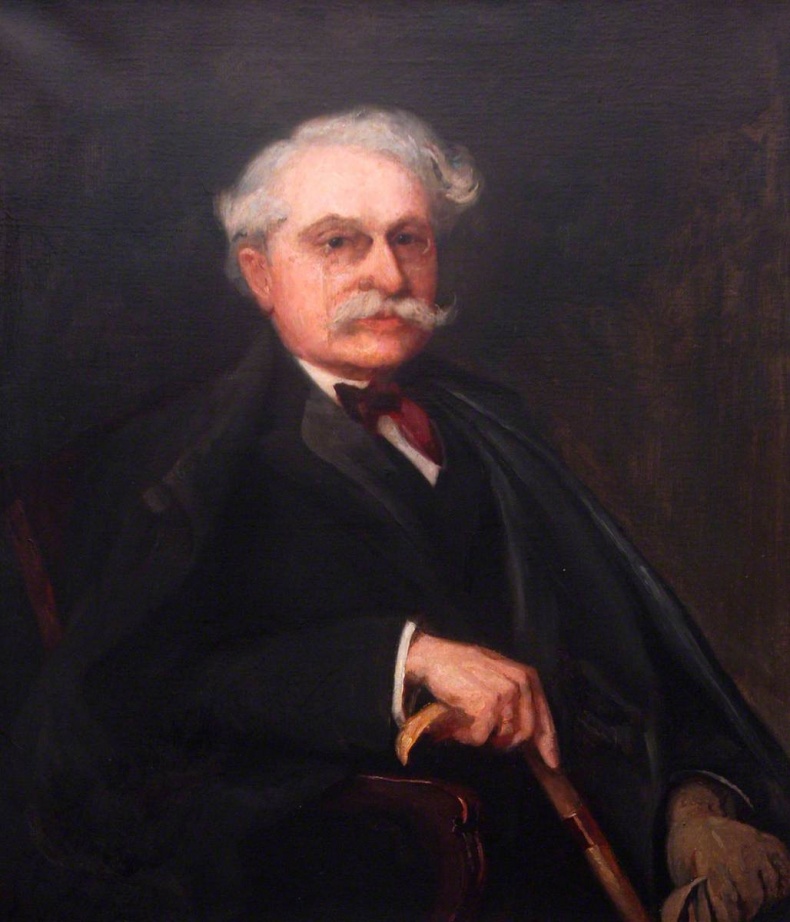
Merz, Dr John Theodore
1840 – 1921
Engineer and Historian of Thought
Dr John Theodore Merz was the founder and vice president of the Newcastle upon Tyne Electricity Supply Company [NESCO], established in 1889. He was a naturalised Briton of German origin. Through his marriage to Alice Richardson, he joined the influential North East Quaker network. The Richardson family had business interests in tanning, banking, chemicals and shipbuilding, and was active in various movements for social and political reform.
Merz was a central figure within the remarkable group of inventor-engineer-entrepreneurs based in the North East during the final quarter of the nineteenth century. The Newcastle Literary and Philosophical Society was then in its pomp with a large membership of people who believed that armed with knowledge and strong organization they could re-invent the world for the better. It was here that Joseph Swan first publicly demonstrated the incandescent light bulb in 1879, ushering in the age of electric lighting. The towering figure of industrialist William Armstrong chaired the meeting, and with Swan and Merz he founded in 1881 the Swan Electric Lighting Company to manufacture light bulbs at scale. Swan merged with his rival Edison in 1883 to create the Edison and Swan United Electric Lighting Co. with one of its factories in Sunderland. NESCO, the next piece in the electrification jigsaw in the North East, followed in 1889. In 1902 the Tyneside Tramways and Tramroads Co. was formed with Merz as chairman to operate electric trams in Gosforth, Wallsend and North Shields.
Educated in Germany at the universities of Giessen, Gottingen, Heidelberg and Bonn, Merz had very strong academic as well as practical leanings, taking the view that economic and social progress must necessarily be founded on scientific and theoretical knowledge. It is no surprise, therefore, to find that he played a crucial role in helping found the Newcastle College of Physical Sciences as both champion and subscriber, winning the backing of initially sceptical heavyweights like William Armstrong. He served on the Council of the College in the 1880s and later on the Senate of Durham University of which the College was then part. In 1909 he donated his mathematical library to college, then named Armstrong College, containing more than a thousand volumes. In 1919 he made a second donation of an even larger library containing near 3,000 works on philosophy, history and art. He had collected these works over many years while writing A History of European Thought in the Nineteenth Century, published in four volumes between 1896 and 1914, one of his many personal contributions to the philosophy of science.
Merz had three sons, electrical engineer Charles (1874–1940), chartered accountant Norbert (1877-1948), solicitor Ernest (1881-1909), and a daughter, social worker, magistrate and philanthropist Teresa (1879-1958). Charles became a leading electrical engineer who pioneered in the North East the use of high voltage three-phase power distribution that became the model for the UK national grid, earning him the nickname ‘Grid King’. He wrote a paper on power station design that provided a blueprint many of the early large-scale power stations built across the world. Newcastle University named Merz Court, the building that currently houses its School of Electrical and Electronic Engineering, including its cutting-edge research on power grids, in honour of the contribution made by the Merz family to the University and the region.
References
Constantine, S. (2008). Child migration: philanthropy, the state and the empire, History in Focus, 14.
Lomas, R. (2009). An encyclopaedia of North East England, London: Birlinn Ltd, pp. 289-90.
O’Donnell, E. (2015). Doing good quietly: The Life and work of Teresa Merz (1879 – 1958) of Newcastle upon Tyne, Available here (Accessed 16/08/18).
Spencer, J.R. (1937). The Northern Pageant, Newcastle upon Tyne: Newcastle Chronicle Ltd, pp. 103-4.
Wikipedia. (2018). John Theodore Merz, Available here (Accessed 16/08/18).
University of Newcastle upon Tyne. (1968). Claremont Tower Brochure, Available here (Accessed 16/08/2018).